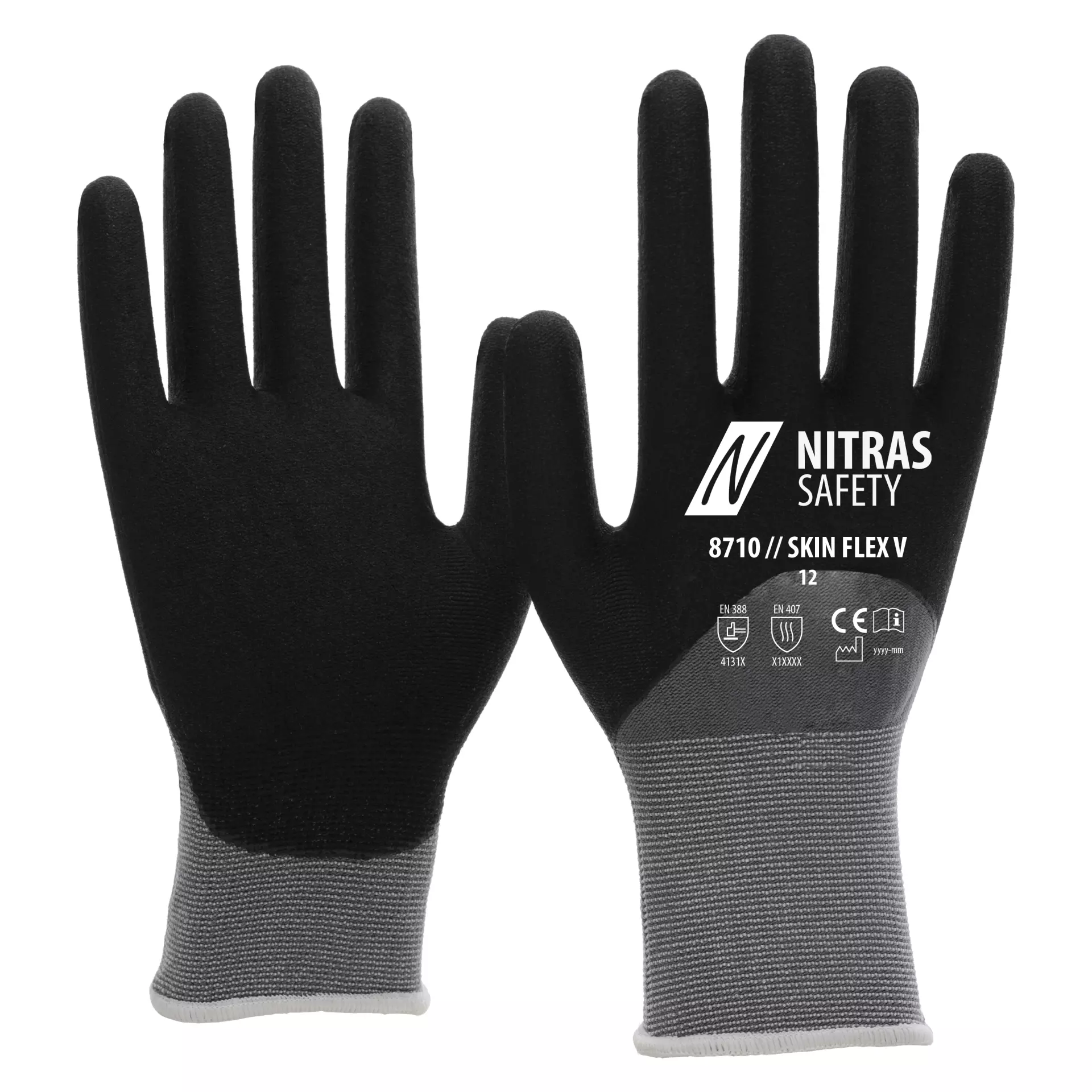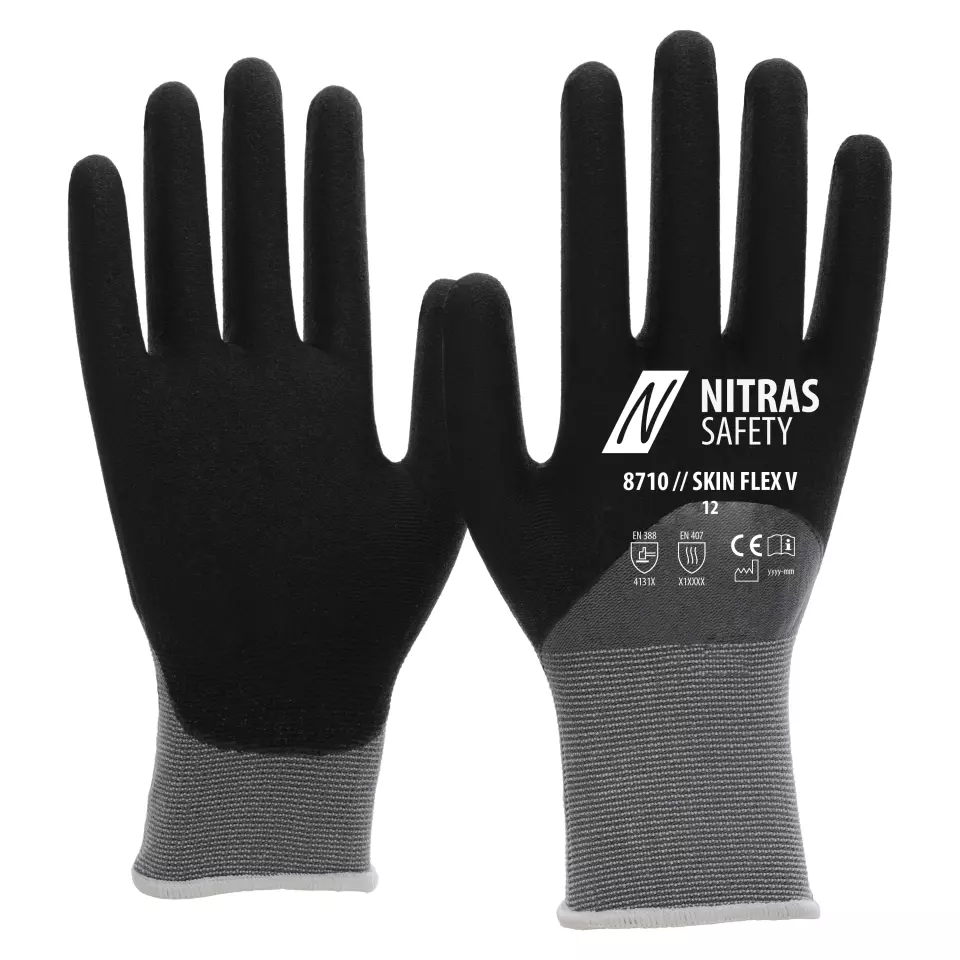

Features You'll Love

Cuff Style · Knit
Determines how the glove secures around the wrist, affecting fit, protection from debris, and ease of putting gloves on and taking them off.

Palm Material · Fabric
The material used on the palm side of the glove, affecting grip, durability, protection level, and comfort during use.

EN 388 · Tear Resistance Level 3, Puncture Resistance Level 1
Offers strong resistance against ripping, making the material durable against snags and tears.
Provides basic protection against punctures from blunt objects like splinters, not sharp points like needles.
Nitras
SKIN FLEX V Knitted Gloves, Black, 12 pairs
SKIN FLEX V Knitted Gloves, Black, 12 pairs
(17)
349,16 kr
Price per 12 pairs
29,10 kr / pair
Choose size
Shipping fee is 89,00 kr for orders under 875,00 kr
Features You'll Love

Cuff Style · Knit
Determines how the glove secures around the wrist, affecting fit, protection from debris, and ease of putting gloves on and taking them off.

Palm Material · Fabric
The material used on the palm side of the glove, affecting grip, durability, protection level, and comfort during use.

EN 388 · Tear Resistance Level 3, Puncture Resistance Level 1
Offers strong resistance against ripping, making the material durable against snags and tears.
Provides basic protection against punctures from blunt objects like splinters, not sharp points like needles.
Product description
Professional knitted gloves featuring special stretch fabric and 3/4 coating for enhanced grip and protection. These gloves combine superior dexterity with excellent wearing comfort through their knitted wrist design. Certified to STANDARD 100 by OEKO-TEX®, they offer premium quality and reliable slip resistance for demanding applications.
Product Features:
- Special stretch fabric construction
- 3/4 coating for enhanced protection
- Knitted wrist for secure fit
- Superior dexterity and grip performance
- Slip-resistant surface
Technical Details:
- STANDARD 100 by OEKO-TEX® certified